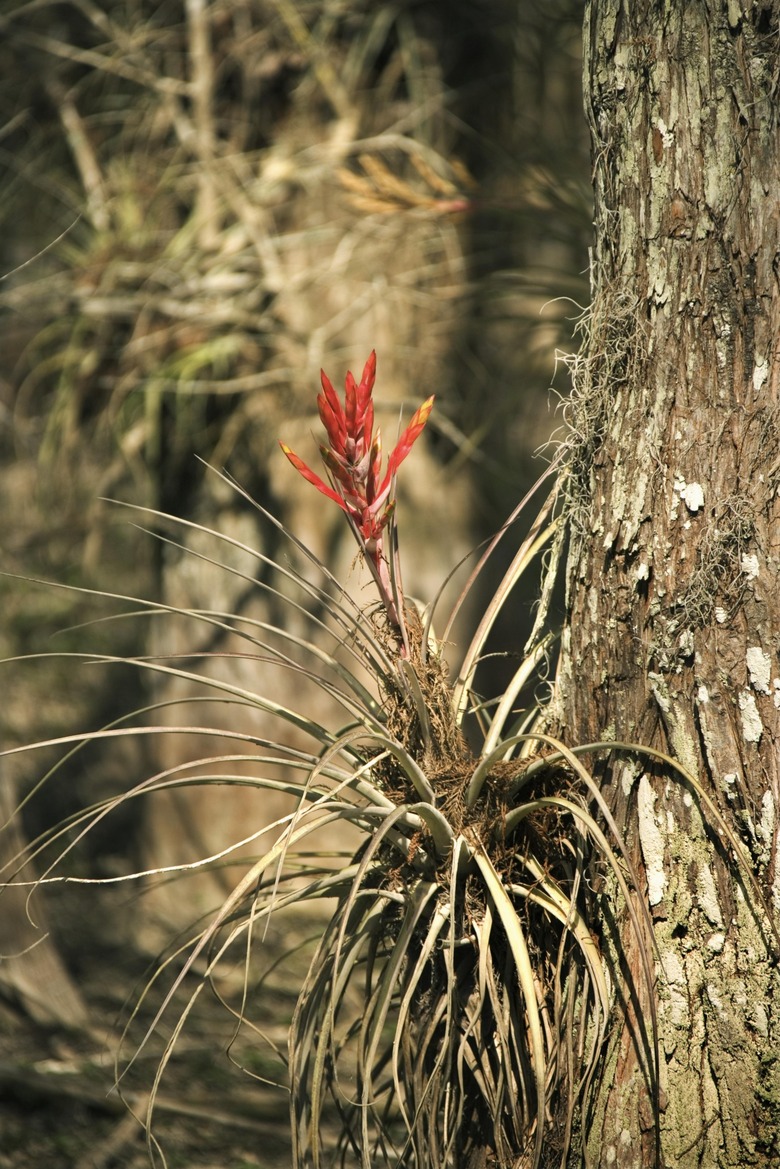Signs That A Bromeliad Is Thirsty
Bromeliads are slow-growing, long-lived plants. Most of them are epiphytes, or organisms that grow on another plant without harming it. These plants often live without soil, which can make it hard to determine when to water them. Air plants (Tillandsias spp.) for example, don't need soil and some grow outdoors in U.S. Department of Agriculture plant hardiness zones 10 through 11. Observing your plant carefully for the subtle signs of dehydration is essential if you want to give it enough moisture.
Dry Media
Step 1
Some bromeliads tolerate being grown in a light, well-aerated growing medium. This must remain moist to provide the plant with adequate moisture. When the medium dries out, refill the leafy "tank" in the center of the bromeliad and gently dampen the media around the roots. Don't saturate the growing medium, as it can encourage root rot.
- Bromeliads are slow-growing, long-lived plants.
- These plants often live without soil, which can make it hard to determine when to water them.
Brown Leaf Tips
Step 1
Bromeliads have adapted to go without water during dry periods by concentrating moisture in the center of the plant. When they begin to dehydrate, they pull water away from the leaf tips. This causes the ends of the leaves to turn brown and shrivel. When a bromeliad has brown lower leaf tips, it is indicating that it needs more water.
Dry Water Tank
Step 1
The center water tank in many bromeliad species should always contain some water. If the water level is low or if this holding area has become completely dry, refill it. It may be necessary to periodically fill, empty and refill this tank if fungi or hard water deposits are a concern. This action washes off the leaves and keeps the bromeliad healthier.
- Bromeliads have adapted to go without water during dry periods by concentrating moisture in the center of the plant.
- When they begin to dehydrate, they pull water away from the leaf tips.
Curled Leaves
Step 1
Plants that are dry but not completely dehydrated may begin to curl or roll their leaves. This usually occurs before the browning stage. It is a good indicator that a bromeliad is not receiving enough water. Acorn Markets recommends completely submerging the bromeliad in water for an hour, then shaking it off and returning to a normal watering schedule.
